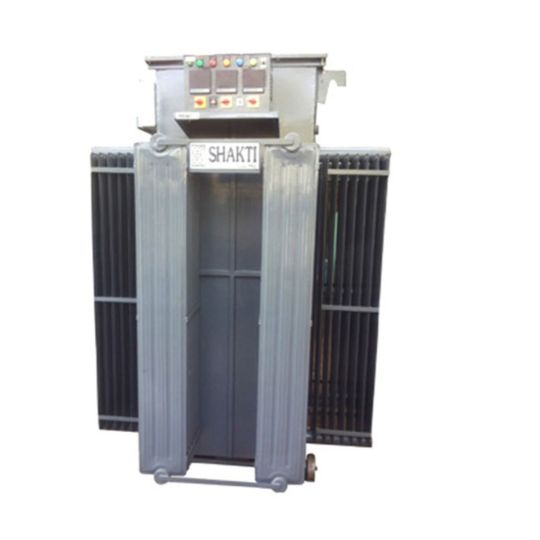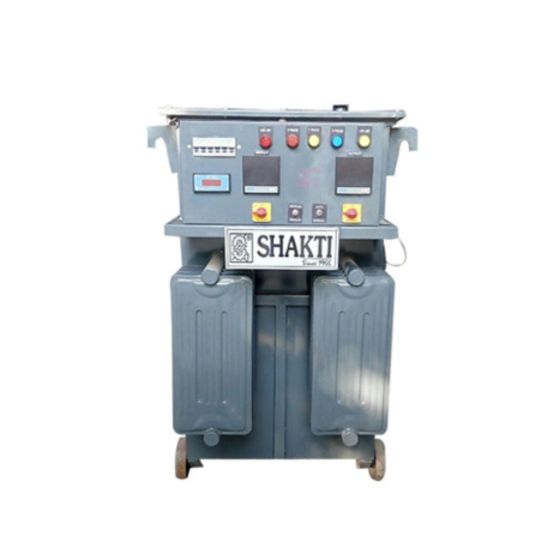#linear voltage regulators
Explore tagged Tumblr posts
Text
https://www.futureelectronics.com/p/semiconductors--analog--regulators-reference--linear-regulators/lm317ld13tr-stmicroelectronics-8959751
Adjustable linear regulator, programmable linear regulators,
LM317 Series 100 mA 1.2 to 37 V Adjustable Positive Voltage Regulator - SOIC-8
#STMicroelectronics#LM317LD13TR#Regulators & References#Linear Regulators#resistance#linear voltage regulators#Voltage References#Data Processing#High voltage dropout linear regulator#references supplier
1 note
·
View note
Text
Voltage conversion system, Power Management IC, DC-DC Switching Converter
MP4570 Series 55 V 3 A Fully Integrated Step-Down Converter - TSSOP-20EP
#Regulators & References#Switching Regulators#MP4570GF-Z#Monolithic Power Systems#DC DC/LDO Regulator#Linear voltage IC regulator#Linear Voltage Regulators#power switch#Voltage conversion system#Power Management IC#DC-DC Switching Converter
1 note
·
View note
Text
https://www.futureelectronics.com/p/semiconductors--analog--regulators-reference--linear-regulators/lm217mdt-tr-stmicroelectronics-2152788
What is a regulator, voltage divider network, Shunt regulators, series regulators
LM217 Series 500 mA 1.2 to 37 V Adjustable SMT Voltage Regulator - TO-252
#STMicroelectronics#LM217MDT-TR#Regulators & References#Linear Regulators#what is a regulator#voltage divider network#Shunt regulators#series regulators#Linear voltage regulator#divider network#Programmable#Switching#circuit#high
3 notes
·
View notes
Text
Best Uses of NCV1117 in Power Supply Systems
Power supply systems are the backbone of almost every electronic device, and at the heart of these systems, you’ll often find voltage regulators ensuring that power is delivered safely and consistently. Among the most popular and reliable voltage regulators is the NCV1117. This low-dropout (LDO) regulator is a favorite among engineers and hobbyists alike due to its versatility and ease of use. But what are the best uses for the NCV1117 in power supply systems?
Let’s explore how the NCV1117 can be used to improve various power supply designs and why it might just be the perfect regulator for your next project.
Understanding the Role of Voltage Regulators in Power Supply Systems
Before diving into the specific uses of the NCV1117, it’s essential to understand why voltage regulators are crucial for power supply systems. Think of voltage regulators as "steady hands" that ensure your devices receive the right amount of power, protecting sensitive components from damage. Without regulators like the NCV1117, devices would be at the mercy of fluctuating voltages, potentially leading to overheating or malfunction.
Why Choose the NCV1117 for Power Supply Systems?
So why choose the NCV1117 over other voltage regulators? First, its low-dropout voltage allows it to function efficiently even when the input voltage is just slightly higher than the desired output. This is particularly beneficial in power-sensitive applications where every bit of energy efficiency counts. Furthermore, the NCV1117 can handle up to 1A of current, making it ideal for a range of medium-power applications.
Regulating Microcontroller Power Supply
One of the most common uses for the NCV1117 is in microcontroller power supplies. Microcontrollers like the Arduino or Raspberry Pi often require a stable 3.3V or 5V power supply to function correctly. The NCV1117 is perfect for this role because of its ability to step down voltage efficiently from a higher input, ensuring your microcontroller runs smoothly without voltage spikes that could lead to instability.
Imagine you're giving a public speech, and your microphone cuts out every few seconds—frustrating, right? That’s what can happen to your microcontroller without a stable power source. The NCV1117 keeps everything "on the mic" and running without interruptions.
Using NCV1117 in Battery-Powered Devices
For battery-powered devices, energy efficiency is crucial. The NCV1117's low-dropout characteristics make it a perfect candidate for battery-operated gadgets like wireless sensors, handheld devices, and portable medical equipment. Because it doesn't waste much energy as heat, it prolongs battery life, keeping your devices running longer between charges.
NCV1117 for Sensor Stabilization
Many sensors, especially in industrial or automotive settings, require precise and stable voltages to function properly. The NCV1117 is often used in sensor stabilization circuits where it ensures that even when the input power fluctuates, the sensor gets a smooth, consistent voltage. This reliability makes it a go-to solution for systems that depend on real-time data from sensors.
Voltage Regulation in Automotive Applications
The automotive industry relies heavily on robust and reliable components, and the NCV1117 fits the bill for many automotive electronics. From controlling dashboard displays to powering in-car sensors, this regulator helps ensure the various systems in a vehicle receive the right voltage, even under extreme conditions such as high temperatures or fluctuating battery power.
How the NCV1117 Benefits Consumer Electronics
In consumer electronics, devices like smartphones, tablets, and routers demand compact, efficient voltage regulation. The NCV1117’s small form factor and thermal protection features make it ideal for use in tight spaces without the risk of overheating. Additionally, it supports the low power requirements of modern gadgets, ensuring they run cool and efficiently.
NCV1117 for LED Drivers and Lighting Systems
LEDs are highly efficient, but they require a stable voltage to operate at their best. The NCV1117 is often used in LED driver circuits, ensuring that LEDs receive consistent power and maintain their brightness and longevity. Whether in household lighting systems, automotive headlights, or display screens, the NCV1117 helps maintain stable illumination.
Ensuring Safe Operation in Communication Devices
Communication devices such as modems, routers, and even satellite equipment require voltage regulation to maintain clear and uninterrupted data transmission. The NCV1117 ensures these devices operate without power-related hiccups, keeping signals stable and systems reliable, even in fluctuating power environments.
How to Properly Integrate the NCV1117 into Your Circuit
Integrating the NCV1117 into your power supply design is straightforward, but it requires careful attention to details such as input and output capacitor selection and heat dissipation. Ensuring proper heat sinks are used can prevent thermal shutdowns in higher-current applications, while adding the recommended capacitors ensures voltage stability.
Common Mistakes to Avoid with NCV1117
Even though the NCV1117 is easy to use, common mistakes can lead to inefficiency or even damage to your circuit. Some of the most frequent errors include:
Not using adequate heat dissipation: Without proper cooling, the NCV1117 can overheat and shut down.
Incorrect capacitor selection: Using the wrong size or type of capacitors can lead to instability.
Input voltage too low: Ensure the input voltage is high enough to provide the required output plus the dropout voltage.
Conclusion
The NCV1117 voltage regulator is an incredibly versatile component that plays a critical role in power supply systems across various industries, from automotive to consumer electronics. Whether you’re stabilizing a sensor, powering a microcontroller, or ensuring steady voltage in LED drivers, the NCV1117 stands out as a reliable and efficient choice. By understanding its features and best practices, you can maximize its benefits in your projects and ensure long-lasting, stable performance.
No matter the application, the NCV1117 helps keep your devices running smoothly—just like a trusted mechanic keeps your car on the road, fixing issues before they cause real problems.
1 note
·
View note
Text
https://www.futureelectronics.com/p/semiconductors--analog--regulators-reference--linear-regulators/lp2950cdt-5-0rkg-onsemi-5181318
Programmable linear regulator, Voltage LDO Regulator, Flexible linear regulator
LP2950 Series 100 mA 5 V Fixed Output SMT LDO Voltage Regulator -TO-252
#Onsemi#LP2950CDT-5.0RKG#Regulators & References#Linear Regulators#Programmable#Voltage LDO Regulator#Flexible#what is a voltage regulator#High voltage linear regulators#Linear voltage regulator#Low dropout linear regulator#Input voltage
1 note
·
View note
Text
https://www.futureelectronics.com/p/semiconductors--analog--regulators-reference--linear-regulators/lp2950cdt-5-0rkg-onsemi-1118329
Inverter voltage regulator, regulator circuit, Types of linear voltage regulator
LP2950 Series 100 mA 5 V Fixed Output SMT LDO Voltage Regulator -TO-252
#Regulators & References#Linear Regulators#LP2950CDT-5.0RKG#onsemi#Inverter voltage regulator#regulator circuit#Types of linear voltage regulator#High voltage#Integrated-circuit#Low dropout linear regulator#Voltage Regulator#regulator 12v
1 note
·
View note
Text

3-Phase Linear/Roller Types Servo Regulator - Shakti Electronics
Buy the best quality Linear Servo Stabilizer from a trusted manufacturer. . . Contact us: +91-9829059997 . . Enquiry Now: https://www.shaktiecorp.com/linear-types-stabilizer.php
#servo voltage stabilizer#voltage stabilizer#transformer#voltage regulator manufacture#shaktielectronics#3 phase linear regulator#servo voltage regulator manufacturers in india
0 notes
Text
https://www.futureelectronics.com/p/semiconductors--analog--regulators-reference--linear-regulators/ncp5501dt33rkg-onsemi-4025789
Low dropout linear regulator, Battery charger, Linear voltage regulator circuit
NCP5501 Series 500 mA 3.3 V Fixed Output LDO Voltage Regulator - TO-253
#Regulators & References#Linear Regulators#NCP5501DT33RKG#onsemi#low dropout#Battery charger#Linear voltage regulator circuit#Adjustable#Output LDO Voltage Regulator#Voltage regulator#AC voltage regulator
1 note
·
View note
Text
https://www.futureelectronics.com/p/semiconductors--discretes--transistors--mosfets/si2301cds-t1-ge3-vishay-6369524
Transistors, Mosfets, SI2301CDS-T1-GE3, Vishay
P-CH MOSFET SOT-23 20V 112MOHM @ 4.5V - LEAD(PB) AND HALOGEN FREE
#Transistors#Mosfets#SI2301CDS-T1-GE3#Vishay#circuits#small signal mosfet#high power mosfet#high current#module#Mosfet transistor#Linear mosfet#Types of mosfet#Mosfet gate#power transistor#audio mosfet#Power regulators#Low voltage
1 note
·
View note
Text
https://www.futureelectronics.com/p/semiconductors--analog--regulators-reference--linear-regulators/lm317d2tr4g-onsemi-8485302
Programmable linear regulator, power-supply voltage, AC voltage regulator
LM317 Series 1.2 V 1.5 A Positive Adjustable Voltage Regulator - D2PAK
#STMicroelectronics#LM317D2TR4G#Regulators & References#Linear Regulators#Programmable linear regulator#power-supply voltage#AC voltage regulator#Low dropout#Regulator Module#High#regulator types#digital logic#voltage divider network
1 note
·
View note
Text
https://www.futureelectronics.com/p/semiconductors--analog--regulators-reference--linear-regulators/lm317d2t-tr-stmicroelectronics-3412715
Adjustable voltage regulator circuit, Fixed voltage regulator,
LM317 Series 1.2 V 1.5 A Positive Adjustable Voltage Regulator - D2PAK
#Regulators & References#Linear Regulators#LM317D2T-TR#STMicroelectronics#Adjustable voltage regulator circuit#Fixed voltage regulator#circuit#low dropout linear regulator#Linear voltage regulator types#AC voltage regulator
1 note
·
View note
Text
https://www.futureelectronics.com/p/semiconductors--analog--regulators-reference--linear-regulators/lm317d2t-tr-stmicroelectronics-8253809
STMicroelectronics, LM317D2T-TR, Regulators & References, Linear Regulators
LM317 Series 1.2 V 1.5 A Positive Adjustable Voltage Regulator - D2PAK
#STMicroelectronics#LM317D2T-TR#Regulators & References#Linear Regulators#What is voltage regulator#high voltage#output voltages#circuit#Low-Noise LDO Regulator#voltage divider network#constant voltage regardless
1 note
·
View note
Text
https://www.futureelectronics.com/p/semiconductors--analog--regulators-reference--linear-regulators/lm317d2t-tr-stmicroelectronics-6124567
Types of Linear Regulators, Programmable linear regulator
LM317 Series 1.2 V 1.5 A Positive Adjustable Voltage Regulator - D2PAK
#Regulators & References#Linear Regulators#LM317D2T-TR#STMicroelectronics#output voltages#linear power supply#Programmable linear regulator#Voltage Regulator#maximum input voltage
1 note
·
View note
Text
https://www.futureelectronics.com/p/semiconductors--analog--regulators-reference--linear-regulators/lm317d2t-tr-stmicroelectronics-3412715
Low dropout linear regulator, linear voltage regulator, AC voltage regulator,
LM317 Series 1.2 V 1.5 A Positive Adjustable Voltage Regulator - D2PAK
#Regulators & References#Linear Regulators#LM317D2T-TR#STMicroelectronics#Adjustable Voltage Regulator#circuit#Low dropout linear regulator#AC voltage regulator#Voltage divider network#High voltage regulators#Linear regulators power
1 note
·
View note
Text



Buy High Quality Linear Types Servo Stabilizer from Shakti Electronics
Buy Linear Type Servo Stabilizer from Shakti Electronics, we will provide you heavy-duty regulator made from high-quality components if you need for industry use, please visit our website and contact us now
Contact us: +91-9983449997
Visit our webite: https://www.shaktiecorp.com/linear-types-stabilizer.php
#servo voltage stabilizer#linear types servo stabilizer#3 phase linear regulator#voltage stabilizer#automatic servo stabilizer
0 notes
Text
https://www.futureelectronics.com/p/semiconductors--analog--regulators-reference--linear-regulators/mc78m05bdtrkg-onsemi-2105690
What is regulator, Voltage LDO Regulator, Adjustable linear regulator
MC78M05BD 35 V 500 mA Surface Mount Positive Voltage Regulator - DPAK−3
#onsemi#MC78M05BDTRKG#Regulators & References#Linear Regulators#Voltage LDO Regulator#Adjustable#Regulators linear voltage regulator#High voltage dropout linear regulator#programmable linear regulators#high voltage#maximum input voltage
1 note
·
View note